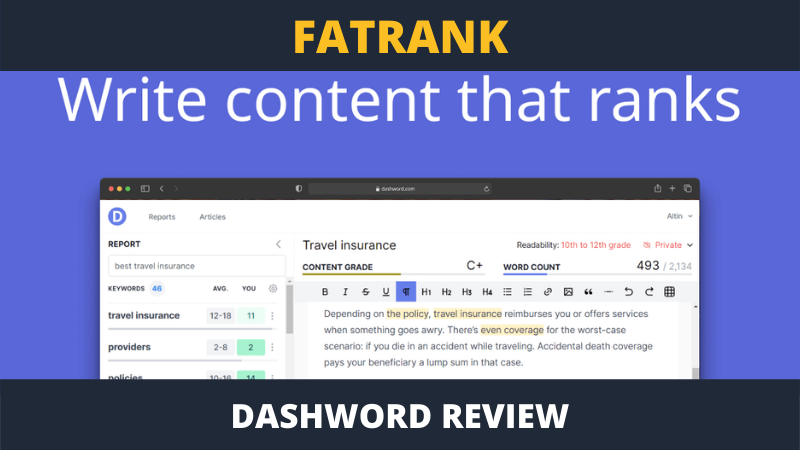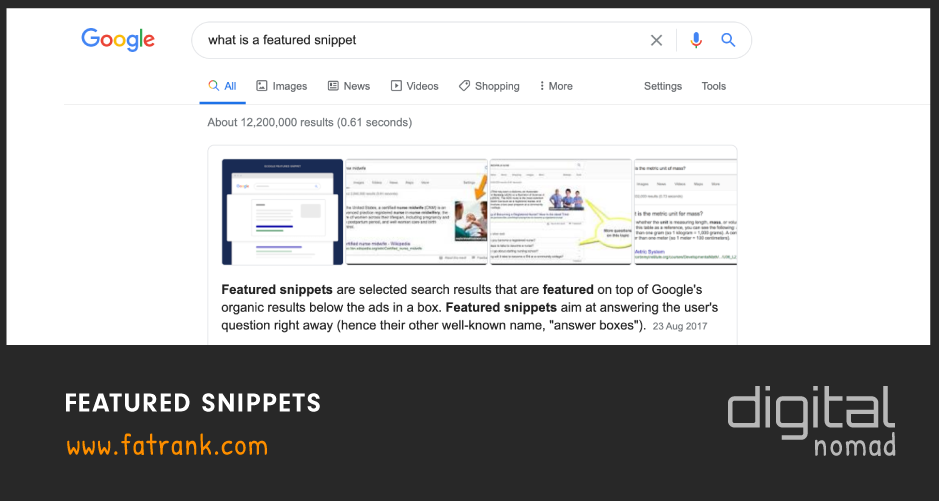
Topical SEO – Create Supporting Articles
When people seem to ask the question ‘What is the future of ranking websites?’ the most common answer recently has been the buzzword ‘Topical SEO’.
This is debatable but I am going to run through why topic related linked blogs is actually a huge part of the ranking factor now and will be for years to come.
Gone are the days of writing one large quality article and hitting it with backlinks.
Creating clusters around the topic is a must in July 2024.
Contents
- What is Topical SEO?
- Google MUM MultiTask Unified Model Advancements
- Scientific Approach to Topical SEO
- Why Introduce Topical SEO
- Making New Topics Relevant
- The Knowledge Graph
- Key Facts About Creating Supporting Articles
- How to Define a Topic
- TF: IDF Improvements
- Utilise Hilltop Algorithm
- How to Start Finding Blog Keywords
- Summary
- Bonus Tip
- All SEO Related Posts
What is Topical SEO?
Topical SEO is the strategy of trying to rank websites optimised for topics.
Instead of optimising for keywords, you start to build a huge network of niche relevant topic related articles that should all rank on search engines- this gives topical authority.
Topical relevance is crucial to build topical authority for your web page, as this content strategy works with the Google algorithms to believe you understand what you are talking about.
These are generally supporting articles internal linking to your money pages which are in turn targeting the money key-phrases.
Where this is clever in my opinion is that it gives you multiple pages to link build towards.
Therefore you are less likely to over optimise on too many links, get penalties for anchor text and detect the penguin penalty alarm.
However, it also allows the supporting articles to rank on search engines like Google for long-tail variations of the keywords you are trying to go after.
Google MUM MultiTask Unified Model Advancements
If you are a content marketer in July 2024 and not heard of Googles latest advancements with MUM MultiTask Unified Model where have you been hiding?
The groundbreaking MultiTask Unified Model can not only run search simultaneously but it can collect documents in multiple languages and multiple modalities so can understand different forms of information like text, images and video.
MUM is 1000x more powerful than BERT
Check out the Google MUM explanation video.
It clearly defines where Google is going with search and wanting you to not only write good quality content on a given topic – but also all surrounding relevant topics that should be covered if you are an expert in the field.
Being able to understand all of the different ways people naturally communicate and interpret information through search engines is an important milestone for the search giants.
Here is a Google article introducing MUM (MultiTask Unified Model) and applying advanced AI to Search.
Scientific Approach to Topical SEO
When trying to explain the basics of topical SEO I could not help but think of this as atoms, with a nucleus and electrons.
The reason being is a nucleus always has electrons spinning around it.
The electrons support the nucleus and this is exactly how you should treat your money pages.
Create articles to support and surround your money page with topically relevant blogs.
Look at this image and picture the nucleus as the way you need to organise the silo structure for your website:

Why Introduce Topical SEO
There are many reasons why SEO agencies need to integrate topical SEO into their strategy:
- Trying to rank a location that is not related to the topic of your website in any way
- Adding a new product you are starting to sell
- Adding a new service-based item to your portfolio
- Trying to rank anything not related to your exact topic of the site
The issue with these above is simply that there are not enough pages on your site talking about that specific keyword.
The root domain might never have mentioned anything to do with this before.
Single landing pages can no longer rank on search engines anymore for micro-niche sites, so sites need supporting blogs.
These could be loosely related information about the location you are trying to rank, or tips on how to use your new product or why it is best to order a certain service for example.
Making New Topics Relevant
Imagine you have a website all about mountain biking activities, and you start selling a specialist chemical for cleaning bikes.
If you add a page onto your website which talks about these cleaning chemicals, Search engines like Google aren’t going to see your site as being relevant to this as you’ve probably never mentioned it on any other pages.
It will be much more likely to rank pages from other sites that focus on cleaning and the specific chemicals you are talking about.
By creating a few supporting articles which also talk about cleaning and special chemicals, you can link these to your main page and ensure that the website as a whole is relevant to this topic.
Things like ‘The 5 Best Bike Cleaning Tips’ or ‘What to Use for Washing Bike Wheels’ are all relevant to your new product, but they fit in with the overall theme of the site as well.
Answering the queries of new topics involved in your page would fulfil search intent. If your content can reach the right search intent for your query asked, your ranking should sky rocket- this would also build topical authority.

Introducing niche relevant articles is a great search engine optimisation strategy.
Simply because you can go after the buying intent keywords like reviews, best, cheap and informative key-phrases like ‘how-to’, ‘what is’ and ‘why use’ etc.
Scaling this out is going to build a brand, a presence and most important traffic to your website.
As traffic is a strong ranking factor then this will be strengthening the site.
Can you see now why this is helping a number of ranking factors for the future of ranking sites?
The Knowledge Graph
The knowledge graph is a feature Google uses to create a better experience for users typing in search queries.
Google has a goal in creating a semantic search engine, so that every query is answered to its best ability and it can enable web pages to be shown highly on the search engine results pages.
It is a snippet of a page that shows up in a bigger and bolder box on the SERP, enticing more people to click onto it.
This will usually be the page that Google thinks offers the best answer to whatever the user is searching for.
This result usually comes from a knowledgeable site or a page that appears to have a good amount of topical authority on that particular subject.
Pages that have headers like ‘What is…?’ or ‘How to…’ and then answer that question often show in this section of the search results.
If you have well-written supporting articles for the page you are trying to rank, it is possible that these can start showing up in the knowledge graph.
You could have a post called ‘How to Clean a Mountain Bike’ which includes lots of information about this topic.
This is a page that might go into a knowledge graph if someone asks a question that relates to that subject.
As the result shows in a larger and more eye-catching box, the user is more likely to click on it, visit your site and then possibly end up purchasing your products.
You can check on how your web pages are doing on the serp through Google Search Console, or other SEO tools.
Key Facts About Creating Supporting Articles
One of the best SEO blogs I have read by a guy called Matt Diggity sums up the key facts about creating supporting articles nicely. The summary is below pulled from the article How to Get Unstuck by Establishing Topic Relevance.
Here are the two key takeaways that you must understand:
- Google now prefers to rank domains that have multiple pages on a given topic (giving domain authority).
- When you try to rank a specific page on a particular topic, Google expects to see that there are other supporting articles on the same site using it as a reference (i.e. linking to it).
People refer to this as ‘establishing relevance’ on a topic.
Understanding this concept, you can know the bare-minimum page count requirement that you’ll need to rank plus you’ll have full control over which page ranks by using contextual inner-page linking.
How to Define a Topic
A group or a cluster of keywords will be assigned relevancy to one another, this “cluster” starts to define a topic.
Once a topic has become its own “entity” in the secondary index, further associations of relevancy will be made. These will be cross-referenced to other topics/entities and even individual keywords from one topic to individual keywords in another topic.
This allows Google to provide us with more relevant results than ever before.
Now, this doesn’t just extend to your content on the page, but it actually makes the same connections between web pages and link neighbourhoods. Each web page, Google sees as a node. It then works out the topical relevancy between each and this can even affect the total value a link may pass.
When Google realises the topical relevancy relating through each page it will build topical authority- leading to a sturdy improvement for your rankings as this is part of search engine algorithms.
So, hopefully, you agree with me that Topical SEO extends far beyond just our on-page content or how we go about performing our keyword research.
Semantic SEO
Semantic SEO is a topic that can be covered here as this particular aspect is relevant to topical authority.
Semantic SEO is a way of content creating while involving topical relevance.
This focuses much more on the topics involved, rather than the keywords.
Semantic SEO will still involve keyword tools, however, as this strengthens the search intent behind each keyword so that the page can achieve topical authority to the highest potential.
TF: IDF Improvements
By creating content depth helps with your overall TF: IDF score for your website.
What is TF: IDF?
TF: IDF is the term frequency-inverse document frequency.
Term frequency is page level and another phrase to explain keyword density of wording being repeated on particular articles. The more times a keyword is repeated on the page then the more weight is given to google that this webpage is about this particular keyword.
Inverse Document Frequency is domain level and how many documents are repeated in a given topic to create content depth around that particular niche/topic. The more documents on a domain supporting this topic the stronger influence your website have on it (domain authority).
What is WDF: IDF?
WDF: IDF is within document frequency-inverse document frequency.
This is basically the same explanation as TF: IDF but some call it WDF because want to understand it is within individual documents the term frequency is calculated.
Both WDF: IDF and TF: IDF considers on-page keyword density multiplied by how many documents on-site support this to give weight on whether this is an influence on that niche.
Utilise Hilltop Algorithm
Now you are starting to understand supporting articles help theme the topic of your domains.
They also help your money pages and this is all part of the hilltop algorithm.
The hilltop algorithm needs volumes of themed content within a site to support your main pages.
If you truly understand what is implied, you can tactfully add content using inherent language from a theme that acts as the thread that connects the documents to a topical body of information.
Google and other search engines do search for any occurrence of two or more words.
Then based on inverse document frequency they assign weighting mechanisms based on proximity and occurrence.
Doing this decides the degree of relevance of the local and global page exhibit and then assign a score.
Building your topical SEO score is explained well in this article on Link Building Or Topical Content And Internal Links that show the importance of supporting articles along with niche relevant internal links.
Using internal links can help to build up the topical relevance and topical authority a you are covering what is being queried.
This score is then used as an earmark/benchmark quota for relevancy in context to other documents within the index.
Based on the “search” and the keyword or key phrase combination used, the search engine index is parsed.
Then through a process of elimination removes pages with the least amount of significance.
It does this until it finds the nearest neighbour that squares the various metrics of the semantic and authoritative qualities of the combined search query.
How to Start Finding Blog Keywords
Starting to find blog keywords and titles through keyword research is probably the most important process in SEO.
The best keywords to go after are within the topic cluster, have search volume and the ability to internal link onto the money pages.
Understanding these factors is key.
There are a few tools I use like Long Tail Pro, Ahrefs Keyword Explorer and Google Keyword Planner.
These are all really useful, but my main tool has to be SEMrush.
Ryan Stewart has a nice video on keyword research here:
Ryan uses a spreadsheet during his research phase when looking at the topics, keywords, and the relevancy. This is one strategy that helps for building topical authority.
Summary
The importance of topical SEO is undeniable, especially when adding new products or topics to an existing website.
If Google doesn’t see new pages as being relevant to your domain, it’s less likely to rank them highly.
By simply having a few supporting articles which establish relevance, you can boost that page and the whole site.
Bonus Tip
When looking to write supporting articles you should be focusing on the user. Create content, get images and videos that are going to give a great user experience. This encourages people to spend time on your site and reduce bounce rates. These don’t have to be promoting your business or the products that you sell. They can just focus on a relevant topic that will generate some interest and attract people to share the article. Here is my step by step guide to my in house team:-
- Create a supporting article that people will share and enjoy reading. Don’t be sharing your money page selling a product straight from the off.
- In the supporting article fill it with amazing photos and videos on the topic and share these throughout social media
- Run Facebook ads to these pages targeting your demographic client base to leverage traffic to these pages
- Outreach with these informational, funny or intriguing articles to attract natural backlinks
- Internal link these articles to your money pages with a defined call to actions to leverage traffic through to them
Why is this the best way to run your sites?
- Adds the freshness of content to the site
- Adds content depth which therefore supports your keywords
- Gives topic relevancy at the domain level (building topical authority and domain authority)
- An easier way to attract natural backlinks
- Generates way more social shares, likes and comments
- The big one is it generates traffic to your site improving bounce rates, time on site and user metrics
- Content is King
- Backlinks are the Biggest Ranking Factors
- Traffic is the Holy Grail
- Gives your brand more personality and engagement
Let us know if you found this post interesting, especially if you have any more points to add. We’d love to hear from you so feel free to leave a comment below! The bonus tip was discussed in this meet up in Amsterdam with some of the biggest affiliates in the world. Amsterdam SEO Q&A – Matt Diggity, Diggy Dirk, James Dooley, Adam O’Hern, Gareth Simpson, Mark Walker all discussing the future of SEO and great networking event.
All SEO Related Posts
Check out the in-depth list of SEO posts.
- Absolute Links vs Relative Links

- AI Content Detection

- AI Copywriting Software

- Artificial Intelligence For Content Writing

- Autoblogging AI Review

- Bolded Keywords in Google SERP

- Content Briefs

- Content Cannibalisation Google Penalty

- Content Decay

- Content Doctor

- Content Expansion

- Content Harmony Review

- Content Plan Roadmap

- Content Strategist

- Content Team

- Dashword Review

- Featured Snippets

- Focus Keyphrase

- Google Duplicate Content Penalty

- Google Fresh Content Ranking Factor

- How To Create A Topical Map

- Identify The Root, Rare, and Unique Attributes Of An Entity

- Jasper.ai Free Trial

- Onboarding Writers

- One Page For One Corpus

- Ordering Content SOP

- Page Optimizer Pro

- Page ReWriter Review

- Passage Ranking

- Progressive Content Optimisation SEO

- Search Perspective Frameworks

- SEO Avalanche Technique

- SEO Content Audit Guide

- SEO Content Optimization Tools

- SEO Content Writers

- Silo Internal Linking

- Standalone Content

- Stealth AI Writer

- Surfer AI Writer

- Surfer SEO Review

- Text Optimizer

- Text Structure

- The SEO Power of Concise Writing

- Topical SEO - Create Supporting Articles

- Use Topic Review

- Website Content Uploader

- Why Is Content Veggie The Best AI Content Tool for SEO?

- Workello

The full list shows the various SEO strategies to help your online marketing knowledge grow fast in July 2024.

About FatRank
Our aim to explain and educate from a basic level to an advanced on SEO and Social Media Marketing.
